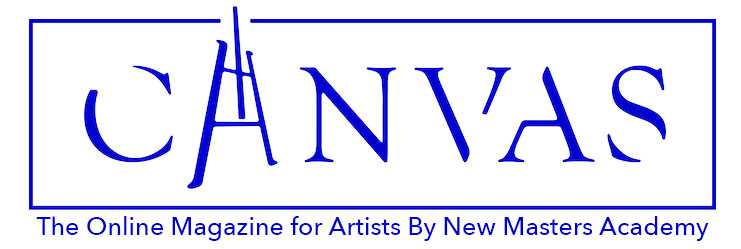Many believers worldwide celebrate the holy days of both Passover and Easter; Leonardo Da Vinci’s iconic painting that depicts Jesus’ Last Supper the traditional Passover Seder, or ritual meal, comes to mind.
Many versions of The Last Supper were painted before the famous version that we all recognize of 1498. Of course, that particular work is Leonardos and was painted at the Santa Maria Delle Grazie monastery in Milan, Italy, where Leonardo worked.

A marvel of a man, Leonardo da Vinci, 1452-1519, epitomizes the term ‘Renaissance man,’ having mastered painting, architecture, physics, and anatomy. He crossed many disciplines with equal aplomb, always finding the intrinsic connections between the sciences and art. He had the skill and foresight to create accurate, workable designs for machines like the bicycle, helicopter, submarine, and military tank that would not come to fruition until hundreds of years later.
Largely self-educated, he filled dozens of secret notebooks with inventions, observations, and theories.
But Leonardo is best known for the Louvre’s Mona Lisa and The Last Supper, created for the refectory of the Monastery of Santa Maria Delle Grazie, measuring about 15 by 29 feet.
The Last Supper was said to be the last meal Jesus ate with his disciples before his betrayal and arrest, recorded in the Synoptic Gospels. It is commonly overlooked that this meal was also a Passover meal.
One of the important moments of The Last Supper is Jesus’ command to remember what he was about to do on behalf of all humankind: shed His blood on the cross, thereby paying the debt of our sins (Luke 22:19).
It is believed that he knew what would happen, that he knew Judas was going to betray him, and that the other disciples would abandon him. These things would have to happen because this was Jesus’ fate, his mission; he had to die on the cross to save people from their sins.

In fact, what sets this painting apart from the many versions that came before it, is that the disciples were previously painted with golden halos. Leonardo’s version, on the other hand, portrays a very human drama with human emotion and weakness, against Jesus’s unwavering, albeit tested, loyalty and conviction.
The painting has been the subject of great debate over its symbolic intentions.
Dan Brown’s bestselling book, and adapted movie, The Da Vinci Code created a great stir when he imbued the painting with sensational historical claims, with hidden messages from secret societies, albeit, more than likely, just a work of fiction.
The painting, nonetheless, is replete with symbols. Like most of the artwork at this time, it was painted to tell a narrative employing deliberate motifs. That is, the figures, gestures, colors, shapes are all painstakingly thoughtful and intentional. Symbols were of great importance and used quite often. The idea that there were symbols should not come as any surprise and does not imply, as is often interpreted, that these were ‘hidden’ messages.

For example, many scholars have discussed the meaning of the spilled salt container near Judas’s elbow. Could this be interpreted to symbolize bad luck, or perhaps Jesus as the salt of the earth?
The human mind and heart have long sought after secrets beyond the flesh, the mysteries of life and existence. The great treasure hunt of esoteric knowledge has long held an attraction that is at least somewhat understandable.
But, perhaps the allure of the painting lies not in its covert codes from a secret society but rather what the painting depicts, pointing us to a life of piety, sacrifice, and devotion, to God and faith.
It might be that the message is not found on the external painting, but in the deeper story, the ideas and history it conveys.
The subject matter is a deeply emotional one – a liminal moment. The next few days will forever change the course of history.
But not only does The Last Supper depict a tumultuous time, but the actual painting is a testament to endurance, much like the nature of faith itself.
Leonardo’s painting began to deteriorate badly after only a hundred years because of his use of alternative methods and materials. Rather than using the typical fresco painting method, applying paint on wet lime plaster, he sacrificed that tested and true method by using an egg yolk binder to increase the painting’s luminosity and detail.
The painting was further compromised by temperature fluctuations and multiple dreadfully botched restoration attempts. The wall it was painted on also suffered from cracks and fractures. At one point a door had actually been cut through the wall.
In 1776, in the aftermath of the French revolution, soldiers defaced the work, throwing stones and scratching out several figures’ eyes. Then, during WWII, it survived the bombing of Milan by the allied forces.
Finally, the painting got some long overdue love and care in a major restoration from 1978-1999, using state of the art diagnostics, cleaning and refurbishing methods. This included infrared reflectography, sonar and radar! It was detailed work and some wondered if too many liberties had been taken in reconstructing the surface.
But, what can we glean here?
This epic story, bridging the Old and New Testaments, as depicted by Leonardo, is an enigma of a man, who knew equally aeronautics and anatomy, painted in watercolor pigment 500 years ago, that endured centuries of unimaginable tribulations, is a miraculous phenomenon in its very own right. And for this, we can be left in awe.
Instead of looking for superficial esoteric meaning at the surface, or ‘hidden’ mysteries, maybe we should recognize the miracles in the very real truth and beauty of the work and let that inspire us. Maybe even to find our own place in the last supper, thus participating and continuing the story of revelation.






Leave A Reply